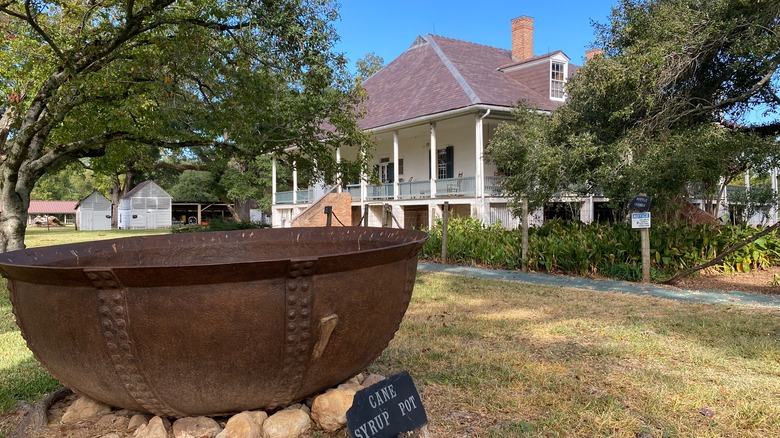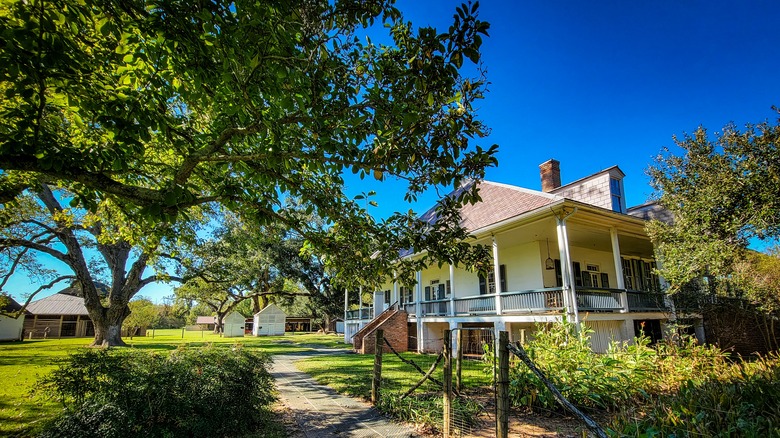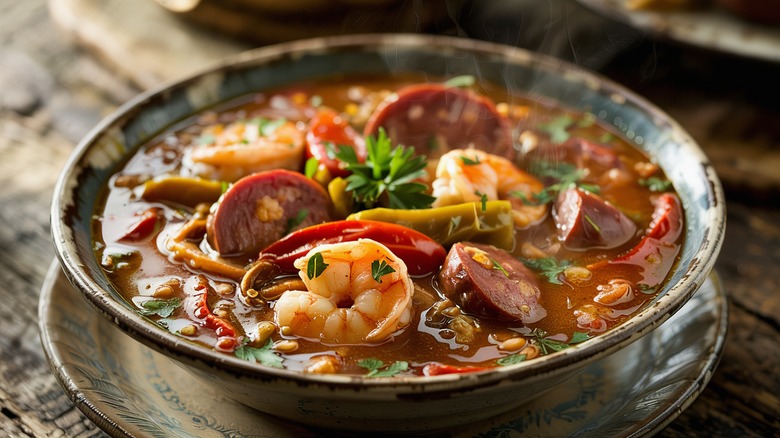This Protected Stretch Of Louisiana River Is Immersed In Creole Culture, Natural Beauty, And History
At first glance, Louisiana's bustling city of New Orleans may seem enough to satisfy any craving for authentic Creole food and culture steeped against a breath-taking city setting. NOLA's unforgettable neighborhoods resound with musical reveries, and the lingering, humid breeze of the Mississippi River. Yet, echoes of the French Quarter resonate strongly across the rest of Louisiana. A peaceful and historic corner, the stunning Algiers Point is an underrated Creole gem by the riverside, and is conveniently located just on the other side of the river from the French Quarter. But if you venture further into Creole country, heading northwest, there are locations rife with magnolias, hot gumbo, and sweeping plantations right in the heart of the Red River.
Nested right by Louisiana's oldest permanent settlement, Natchitoches, the Cane River National Heritage Area is one of those unforgettable places. The region is a treasure trove of breath-taking nature, as well as heaps of Creole culture and food. Whether you want to tour the many orchards and plantations the area offers, or you want to muddy your boots in the outdoors, the Cane River region has plenty of options on offer.
You can reach the Cane River National Heritage area from either New Orleans, 258 miles away, or Dallas, 255 miles away when driving to Natchitoches directly. There is also a handy map on the Cane River National Heritage website you can consult to help you plan your visit, covering the regional highlights and defining the boundaries of this Louisiana county.
The Cane River National Heritage Area is rife with natural beauty and history
Nowadays, the natural heritage area encompasses both sides of Cane River Lake but, as the name suggests, it was once a tributary of the Red River transformed by natural and climatic shifts. The heritage area wraps around the municipality of Natchitoches, known for its significant Native American history as well as for its relevance in the Louisiana Purchase of 1803. Today, you can still visit a few of the surviving plantations from the antebellum era. An example worthy of note is the Oakland Plantation, where you can visit both the owners' quarters and reflect on the history of hundreds of enslaved people brought to the U.S. from the Africa. The plantation, originally used to grow coffee and precious dye indigo, shifted to cotton during the cotton boom. Also based on the heritage grounds, the Magnolia Plantation held a primate in cotton farming, and continued until the 1960s.
Snaking through cotton plantations, pecan orchards, and ripening sugar canes, the landscape of the Cane River Heritage Trail is as varied as the state's own culinary landscape. Starting from the Cane River Creole National Historical Park and Heritage Area, you can admire the conservation efforts in this region by visiting its near 63 acres of flourishing marsh and grassland. You have many options to immerse yourself in centuries of strong Creole culture in this storied corner of Cane River Lake, including going on self-guided tours of Magnolia House buildings, enjoying a nature train ride through the beautiful, scenic green spaces, or even taking a wildlife cruise to explore what the marshland has to offer.
The region is a hotspot for authentic Creole culture and food
Perhaps one of the best-known aspects of Creole heritage, the food culture has stayed as strong throughout the centuries, a magnetic mix of European and African flavors and techniques. Culinary delights abound in Natchitoches. Cane River Commissary is a must stop in your itinerary, as you can savor Creole dishes such as gumbo and fried green tomatoes while enjoying a vibrant session of local Zydeco bands. For the meat lovers visiting the area, casual eatery Lasyone's Meat Pie promises "soulful Louisiana Creole" meat-heavy food including smoked sausage and meat pies.
It's all but unusual to see Creole delicacies coexist with Cajun specialties in the region as well. For a mouthwatering bite of Cajun cuisine while in the Cane River area, head to Mamas & Papas, a combination of Mama's Oyster House and Papa's Bar & Grill, right near the riverfront. A daydream for those passionate about great Cajun seafood dishes, they serve classics from crayfish to blackened or deep-fried catfish prepared from scratch in their kitchen. While in Louisiana, you are spoiled for choice of great food, from hidden gems in bayou country to small culinary habitats close to New Orleans. In Thibodaux, sandwiched between Lafayette and New Orleans, foodie delights and scenic sights go hand in hand. If hunting for Louisiana's best food, you cannot miss the state's capital, which hosts establishments as special as the oldest family-run restaurant in America, serving amazing Creole food.


